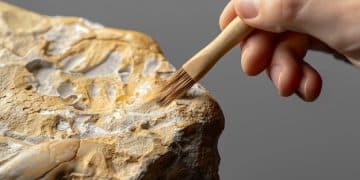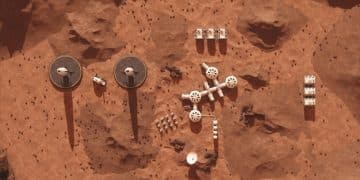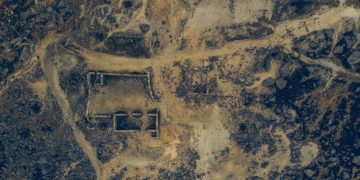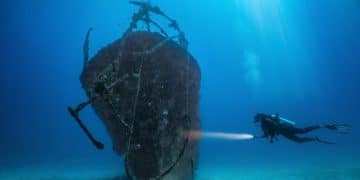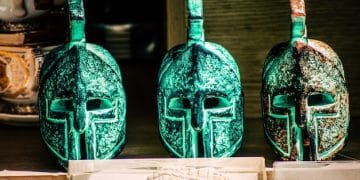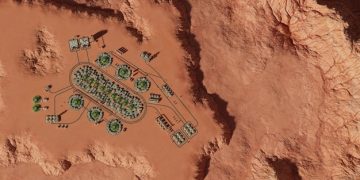Indigenous Perspectives: Archaeology Redefined in the US
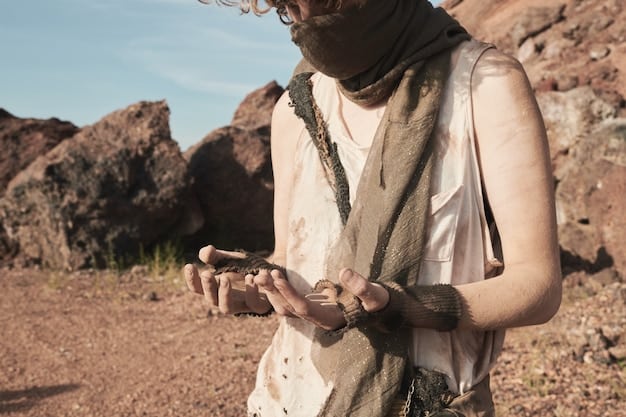
Indigenous perspectives are revolutionizing archaeology in the U.S., fostering collaborative practices that uncover and interpret history more inclusively, moving beyond traditional Eurocentric narratives to embrace diverse cultural understandings of the past.
In recent years, the landscape of archaeological practice in the United States has undergone a transformative shift. The traditional, often colonial, approach to unearthing and interpreting history is being critically re-evaluated, leading to a profound integration of Indigenous Perspectives on Archaeology: How Collaboration is Changing the Way US History is Uncovered and Interpreted. This evolving paradigm acknowledges the crucial importance of Native American voices not just as subjects of study, but as active, authoritative partners in the process, fundamentally redefining our understanding of the American past and its complex narratives.
the historical context of indigenous marginalization in archaeology
For centuries, the mainstream practice of archaeology in the United States largely ignored or disrespected the perspectives of Indigenous peoples. This historical marginalization was rooted in colonial attitudes, where Native American cultures were often viewed as subjects to be studied and their lands as resources to be exploited, rather than sovereign entities with their own histories and knowledge systems.
Early archaeology, often driven by a quest for artifacts and grand narratives aligned with European ideas of progress, frequently conducted excavations on ancestral Native lands without consent or true engagement. This approach led to the desecration of sacred sites, the removal of ancestral remains, and the misinterpretation of cultural heritage, severing connections between living communities and their past.
the legacy of unconsulted excavation
The practice of unconsulted excavation left deep wounds within Indigenous communities. Sacred burial grounds were disturbed, ancestral objects were removed to museums and private collections, and the stories embedded in the landscape were often told by outsiders who lacked the cultural context and spiritual understanding necessary for accurate interpretation.
- Many Indigenous communities viewed these actions as a continuation of colonial violence, alienating them from their own heritage.
- Archaeological findings were frequently presented in ways that reinforced harmful stereotypes or diminished the complexity and sophistication of Native societies.
- The emphasis was often on material culture, detached from the living traditions and oral histories that provided true meaning.
This historical pattern created a deep-seated distrust between Indigenous peoples and archaeologists, forming a barrier to meaningful collaboration for decades. The prevailing power dynamics further entrenched this divide, with academic institutions holding the authority over interpretation and dissemination of knowledge.
shifting paradigms: acknowledging past wrongs
A pivotal moment in recognizing these historical wrongs was the passage of the Native American Graves Protection and Repatriation Act (NAGPRA) in 1990. This landmark legislation mandated the return of Native American human remains, funerary objects, sacred objects, and objects of cultural patrimony to lineal descendants and culturally affiliated Native American tribes and Native Hawaiian organizations.
While NAGPRA primarily addressed repatriation, its deeper impact was forcing a fundamental re-evaluation of archaeological ethics and practices. It compelled institutions to consult with Indigenous communities, initiating a dialogue that, though often challenging, began to build bridges. This was an essential step towards fostering a more equitable and respectful relationship, laying the groundwork for true collaboration, where the sharing of knowledge could become a two-way street.
The historical context of Indigenous marginalization in archaeology highlights the profound need for a paradigm shift, moving from a relationship of exploitation to one of genuine collaboration, respect, and shared stewardship of the past.
the core principles of indigenous archaeological collaboration
Collaborative archaeology, particularly when involving Indigenous perspectives, is not merely about inviting Native voices to the table; it’s about fundamentally restructuring the research process to ensure equity, respect, and mutual benefit. At its heart, this collaboration is built upon several core principles that guide the creation of more inclusive and ethically sound archaeological practice.
shared authority and co-creation of knowledge
Perhaps the most transformative principle is the concept of shared authority. This means moving away from a model where archaeologists are the sole experts and knowledge producers. Instead, Indigenous community members are recognized as equally valid knowledge holders, possessing deep historical, cultural, and environmental understandings of their ancestral lands and heritage.
- Decision-making is collaborative, from the initial research design to the interpretation of findings and their dissemination.
- Indigenous oral histories, traditional ecological knowledge (TEK), and spiritual understandings are integrated alongside archaeological data, providing richer, more nuanced interpretations.
- Projects are co-created, ensuring they address research questions that are meaningful and relevant to the Indigenous community, not just academic interests.
This co-creation of knowledge enriches archaeological inquiry by bringing diverse epistemologies to bear on the past, fostering interpretations that resonate more authentically with living cultures.
respect for cultural protocols and sovereignty
Respect for cultural protocols is paramount. This involves understanding and adhering to Indigenous customs, spiritual beliefs, and community norms throughout the research process. It means recognizing the sovereignty of tribal nations and their right to govern their own heritage, often manifested through tribal historic preservation offices (THPOs) and cultural committees.
Practically, this can involve:
- Seeking free, prior, and informed consent (FPIC) for all research activities on tribal lands or involving Indigenous heritage.
- Understanding the sanctity of certain sites or objects, which may mean they must not be disturbed or publicly displayed.
- Adhering to traditional ceremonies or protocols before, during, and after excavations.
Respect also extends to language, ensuring that findings are communicated in a culturally appropriate and accessible manner, often in native languages where applicable, and recognizing the importance of storytelling and oral tradition.
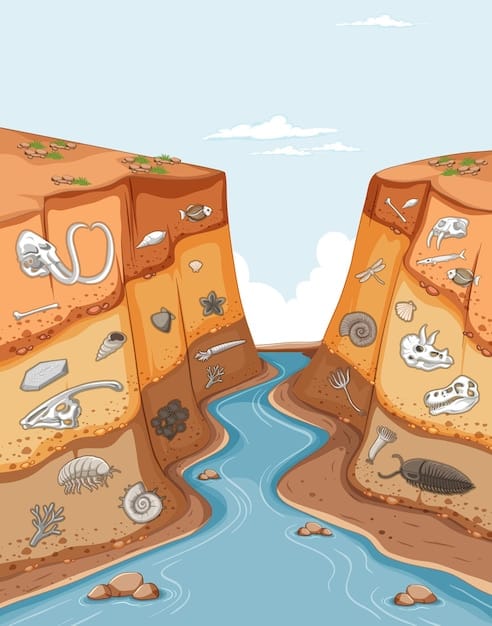
capacity building and reciprocity
True collaboration is reciprocal. It’s not just about archaeologists extracting information; it involves a commitment to capacity building within Indigenous communities. This can take many forms, such as training community members in archaeological techniques, fostering youth engagement, or supporting tribal initiatives to manage their own cultural resources.
Reciprocity means that the research benefits the community directly. This could be through:
- Developing culturally sensitive educational materials for tribal schools.
- Assisting with land claims or legal battles related to ancestral lands.
- Helping to protect and preserve sacred sites from modern development.
- Contributing to tribal self-determination by strengthening cultural identity and political agency.
Ultimately, the goal of collaborative archaeology is to move towards a more ethical, inclusive, and mutually beneficial practice, where Indigenous peoples are not simply consulted, but are full and equal partners in the process of uncovering and interpreting their shared past.
case studies: transformative collaborations in action
The theoretical embrace of collaborative archaeology is made tangible through numerous successful partnerships across the United States. These case studies exemplify how the integration of Indigenous perspectives is not only ethically sound but also produces richer, more accurate, and more relevant historical narratives. They demonstrate the practical application of shared authority, cultural respect, and reciprocity.
the ohio hopewell collaboration
One prominent example is the ongoing collaboration between various Ohio Indigenous nations and archaeologists focusing on the ancient Hopewell earthworks. For generations, these monumental ceremonial sites were studied predominantly by non-Indigenous researchers, leading to interpretations that often disconnected the earthworks from their living descendants.
Now, through formal partnerships, descendant communities such as the Shawnee, Delaware, and Miami nations are actively involved in research, interpretation, and public presentation. They bring invaluable oral traditions and cultural knowledge about the purpose, construction, and spiritual significance of these sites, vastly expanding upon archaeological theories.
- Community members participate in excavations and surveys, often identifying features or artifacts missed by conventional archaeological methods due to their specific cultural knowledge.
- Interpretive signage and museum exhibits are co-developed, ensuring that Indigenous voices and perspectives are central to the narrative, correcting past misrepresentations.
- The collaboration has strengthened efforts to secure UNESCO World Heritage status for the Hopewell Earthworks, highlighting their global significance from an Indigenous perspective.
This partnership not only enriches the understanding of the Hopewell culture but also re-establishes a vital connection between these ancient sites and the contemporary Indigenous communities claiming rightful stewardship over their heritage.
the po’oku village project, hawaii
In Hawai‘i, the resurgence of Native Hawaiian cultural identity has propelled a new era of archaeological practice. The Pō‘oku Village project on the island of Hawai‘i exemplifies this shift. Here, archaeologists are working intimately with the local community, particularly the lineal descendants of the ancient Hawaiian residents of Pō‘oku.
The project is driven by community priorities, including restoring ancestral agricultural systems and understanding the environmental adaptations of their forebears. Archaeological investigations are not ends in themselves but serve to inform and support community-led initiatives in cultural revitalization and sustainable land management.
- Community elders share traditional knowledge about land use, plant species, and building techniques, guiding research questions and interpretations.
- Youth participation is strongly encouraged, fostering intergenerational knowledge transfer and empowering the next generation to be stewards of their heritage.
- Research findings are directly applied to efforts to revitalize traditional farming practices and restore native ecosystems, demonstrating real-world benefits for the community.
These collaborations illustrate that when Indigenous communities are empowered as full partners, archaeological research transcends mere academic pursuit, becoming a powerful tool for cultural preservation, identity reclamation, and self-determination. They represent a significant departure from colonial practices, forging pathways toward a more just and comprehensive understanding of the past.
challenges and opportunities in collaborative endeavors
While the benefits of collaborative archaeology are numerous, the path to successful partnerships is not without its challenges. Building trust, navigating diverse worldviews, and securing equitable resources are complex issues that require dedication and flexibility from all parties involved. However, these challenges also present significant opportunities for growth and innovation within the field.
overcoming historical distrust and power imbalances
One of the most profound challenges is overcoming the legacy of historical distrust that stems from past archaeological practices. Many Indigenous communities have experienced decades of cultural appropriation, desecration, and misrepresentation by researchers. Rebuilding trust requires sustained commitment, transparency, and a willingness from archaeologists to acknowledge past wrongs.
- Developing long-term relationships rather than short-term project-based interactions is crucial.
- Power imbalances, where academic institutions hold more resources and influence, must be consciously addressed by empowering Indigenous partners in decision-making and resource allocation.
- Clear communication protocols and conflict resolution mechanisms need to be established early in any collaborative project.
This process of reconciliation is an ongoing effort, demanding patience and a genuine desire for mutual respect.
navigating diverse epistemologies and methodologies
Another challenge arises from the inherent differences between Western scientific epistemology and Indigenous ways of knowing. Oral histories, spiritual beliefs, and traditional ecological knowledge (TEK) may not fit neatly into conventional archaeological methodologies rooted in empirical observation and material evidence alone. Integrating these diverse knowledge systems requires open-mindedness and innovative approaches.
Opportunities arise in:
- Developing mixed-methods research designs that explicitly incorporate both scientific and Indigenous knowledge systems.
- Learning from Indigenous research methodologies that prioritize community well-being and holistic understanding.
- Utilizing digital tools and platforms to collaboratively map and document sacred sites or oral histories in ways that protect sensitive information while sharing relevant knowledge.
This cross-cultural dialogue can lead to more holistic and comprehensive understandings of the past than either approach could achieve in isolation.
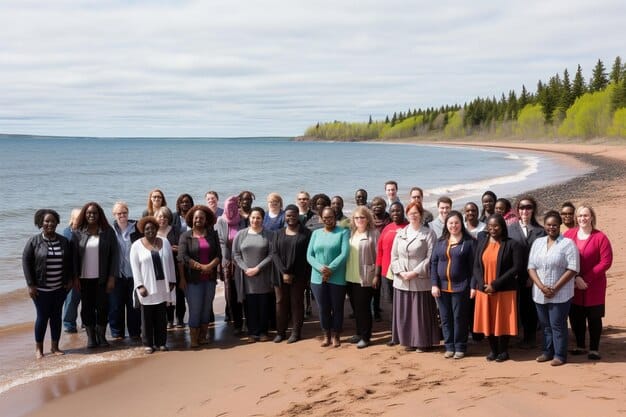
resource allocation and sustainable partnerships
Ensuring equitable resource allocation and financial sustainability for collaborative projects is a significant practical challenge. Indigenous communities often lack the funding and infrastructure to fully engage in archaeological research, while archaeological projects can be underfunded. Sustainable partnerships require shared fundraising efforts and a commitment to direct resources to community needs.
However, opportunities abound in creative funding models, inter-agency cooperation, and developing long-term capacity within tribal organizations to manage their own heritage programs. When these challenges are met with intentionality and respect, collaborative archaeology becomes a powerful engine for decolonization, cultural revitalization, and a more accurate understanding of human history.
decolonizing archaeology: beyond collaboration
The movement towards incorporating Indigenous perspectives marks a critical step in a broader process of decolonizing archaeology. Decolonization implies more than just collaboration; it calls for a fundamental rethinking of the discipline’s theories, methods, and ethical frameworks, dismantling the colonial legacies embedded within its very structure. It seeks to liberate Indigenous voices and knowledge from the confines of Western academic dominance.
rethinking archaeological theory and practice
Decolonizing archaeology involves critically examining the foundational theories that have shaped the discipline. This includes challenging Eurocentric notions of progress, civilization, and time, and recognizing Indigenous temporalities and worldviews. It means moving away from a research agenda that primarily serves Western academic interests towards one that prioritizes Indigenous self-determination and cultural revitalization.
- Archaeological interpretations are re-evaluated to remove inherent biases that may diminish Indigenous agency or misrepresent complex societal structures.
- The emphasis shifts from merely “discovering” sites to understanding the ongoing relationships Indigenous peoples have with their ancestral lands and cultural heritage.
- Knowledge production is transformed from a one-way transfer to a reciprocal exchange, where Indigenous knowledge systems are acknowledged as valid and central forms of inquiry.
This theoretical shift demands that archaeologists become more reflective of their own positions and biases, engaging in self-critique to foster a more just practice.
indigenous-led initiatives and self-determination
The ultimate goal of decolonization in archaeology is to support Indigenous self-determination in managing and interpreting their own heritage. This means fostering environments where Indigenous communities are not just partners, but leaders in archaeological research. It involves strengthening tribal historic preservation offices (THPOs), cultural centers, and educational programs.
Examples of Indigenous-led initiatives include:
- Tribal archaeologies that are conceived, designed, and executed entirely by Indigenous scholars and community members, often addressing questions directly relevant to their cultural continuity and wellbeing.
- The development of tribal museums and archives that house and interpret cultural heritage from an Indigenous perspective.
- Advocacy for legislative changes that further empower tribal nations in cultural resource management.
When Indigenous communities lead, the research agenda is driven by their priorities, whether it’s reclaiming narratives, sacred site protection, or supporting land rights. This leadership ensures that archaeological work serves the interests of the communities whose heritage is being studied, promoting cultural resilience and sovereignty.
the ethical imperative of true partnership
Decolonizing archaeology is not just an academic exercise; it is an ethical imperative. It acknowledges the historical injustices perpetuated by the discipline and seeks to rectify them through genuine partnership and redress. This ongoing process calls for humility, empathy, and a deep commitment to social justice on the part of non-Indigenous archaeologists.
By moving beyond mere collaboration towards full decolonization, archaeology can become a powerful tool not only for understanding the past but also for shaping a more equitable and respectful future, where diverse histories are celebrated and Indigenous self-determination is paramount.
the benefits: richer narratives and a more informed public
The integration of Indigenous perspectives into archaeological practice yields profound benefits, extending far beyond the academic realm. This collaborative approach enriches our understanding of the past, challenges entrenched biases, and creates more meaningful and relevant historical narratives for a wider audience. Ultimately, it fosters a more informed and engaged public regarding the complexities of US history.
unearthing multi-layered histories
Traditional archaeological interpretations often provided a limited or Eurocentric view of the past, overlooking or downplaying the contributions and experiences of Indigenous peoples. By incorporating Native knowledge systems, oral traditions, and cultural insights, archaeology gains access to multi-layered histories that are far more nuanced and complete.
- Archaeological sites that might appear unremarkable in a Western context can reveal profound significance when viewed through an Indigenous cultural lens, such as spiritual connections or specific land management practices.
- The integration of oral histories can provide context for artifacts and features that archaeological data alone cannot, revealing their purpose, symbolism, or the human stories behind them.
- New interpretations emerge, showcasing the resilience, adaptability, and sophistication of ancient Indigenous societies in ways previously unacknowledged.
This holistic approach allows for a deeper appreciation of the intricate ways in which Indigenous peoples shaped the North American landscape before and after European contact, moving beyond simplistic narratives of discovery and conquest.
fostering cultural revitalization and healing
For Indigenous communities, involvement in archaeological projects is often a powerful tool for cultural revitalization and healing. Reconnecting with ancestral lands, reclaiming narratives, and re-establishing stewardship over heritage sites can strengthen cultural identity, promote intergenerational knowledge transfer, and address historical trauma.
Collaborative archaeology contributes to:
- The reaffirmation of Indigenous presence and deep historical connections to specific places, bolstering land claims and cultural legacy.
- The transmission of traditional knowledge from elders to younger generations, ensuring the continuity of cultural practices and languages.
- The empowerment of communities to tell their own stories on their own terms, challenging external impositions and stereotypes.
When archaeology serves as a bridge to cultural continuity and self-determination, its impact resonates far beyond the academic discipline, contributing to the well-being and sovereignty of Native nations.
educating a more diverse public
The collaborative approach also has a transformative effect on public education and engagement. By presenting histories that are co-created with Indigenous peoples, museums, parks, and educational institutions can offer more authentic, inclusive, and compelling narratives. This challenges widely held misconceptions and stereotypes, fostering empathy and cross-cultural understanding.
A more diverse public is exposed to:
- The rich and complex histories of Indigenous nations, moving beyond monolithic or romanticized portrayals.
- The ongoing relevance of Indigenous cultures and political sovereignty in contemporary America.
- The importance of ethical engagement with cultural heritage and the need to respect diverse perspectives.
Ultimately, by yielding richer narratives and fostering a more informed public, collaborative archaeology strengthens the fabric of shared history, promoting reconciliation and a more equitable future for all.
the future of archaeology: a collaborative and decolonized vision
The trajectory of archaeology in the United States is clearly moving towards a more collaborative and decolonized future, where Indigenous perspectives are not just integrated but are central to the practice. This paradigm shift represents a profound evolution, transforming the discipline from one often associated with colonial enterprises into a powerful tool for cultural affirmation, justice, and deeper historical understanding.
embracing ethical responsibility
The future of archaeology hinges on fully embracing its ethical responsibilities. This means moving beyond mere compliance with laws like NAGPRA to genuinely prioritize Indigenous rights, sovereignty, and self-determination. Ethical practice will involve continuous self-reflection by archaeologists, critical examination of their own biases, and a commitment to shared power and resources.
- Long-term relationships founded on trust and mutual respect will become the standard, rather than temporary project-based interactions.
- Training in cultural sensitivity and Indigenous epistemologies will be integral to archaeological education, preparing future generations of practitioners for truly collaborative work.
- The concept of “stewardship” will expand to include a profound responsibility towards the communities whose heritage is being studied, ensuring benefits flow reciprocally.
This ethical foundation is crucial for building sustainable partnerships that genuinely contribute to the well-being of Indigenous peoples and the integrity of historical knowledge.
expanding interdisciplinary approaches
The collaborative future of archaeology will also be increasingly interdisciplinary. Integrating Indigenous knowledge systems requires drawing not just from anthropology and history, but also from environmental sciences, linguistics, and traditional ecological knowledge. This holistic approach recognizes that human history is inextricably linked to the environment, spirituality, and language.
Future research will likely see:
- Increased use of Indigenous language specialists to interpret historical texts and oral traditions.
- Greater integration of traditional ecological knowledge to understand ancient land management practices, agricultural systems, and resource use.
- The development of new analytical tools and methodologies that can respectfully incorporate and represent diverse forms of knowledge, including qualitative and experiential data.
By breaking down disciplinary silos and embracing diverse ways of knowing, archaeology can unlock unprecedented insights into the human past.
fostering inclusive public engagement
Finally, the future of archaeology demands a sustained commitment to inclusive public engagement. This means creating platforms and narratives that are co-developed with Indigenous communities, reaching broader audiences through accessible and culturally appropriate means. Public education will move beyond presenting isolated facts to fostering a deeper appreciation for the living heritage of Indigenous peoples.
This includes:
- Co-curated museum exhibits and digital resources that prioritize Indigenous narratives and perspectives.
- Educational programs that challenge stereotypes and highlight the ongoing contributions of Native nations.
- Community-based archaeology projects that invite broader public participation and understanding of collaborative processes.
The vision for the future of archaeology is one where the past is not merely uncovered, but respectfully rediscovered and reinterpreted through the profound wisdom, experience, and enduring presence of Indigenous peoples, ensuring a more just and accurate historical legacy for all.
| Key Aspect | Brief Description |
|---|---|
| 🤝 Collaborative Principle | Archaeology now emphasizes shared authority, co-creation of knowledge, and mutual respect with Indigenous communities. |
| 📜 Decolonizing the Field | Moving beyond just collaboration to fundamentally rethink theories and practices, dismantling colonial legacies. |
| 🌟 Benefits of Integration | Results in richer narratives, cultural revitalization for Indigenous peoples, and a more informed public understanding of history. |
| 🔮 Future Outlook | Emphasizes ethical responsibility, interdisciplinary approaches, and inclusive public engagement to redefine archaeological practice. |
frequently asked questions about indigenous collaboration in archaeology
▼
Collaborative archaeology is an approach where archaeologists work directly and equitably with Indigenous communities throughout the research process. This includes co-designing projects, incorporating Indigenous knowledge, sharing decision-making, and ensuring mutual benefits. It aims to rectify historical imbalances and create more culturally relevant and accurate interpretations of the past.
▼
Indigenous perspectives offer invaluable insights into the vast majority of U.S. history, predating European contact by millennia. They provide deep understanding of environmental relationships, social structures, and spiritual beliefs that Western archaeological methods alone cannot fully capture. Integrating these perspectives produces richer, more authentic, and complete historical narratives that acknowledge the enduring presence and contributions of Native peoples.
▼
NAGPRA (Native American Graves Protection and Repatriation Act) was a crucial catalyst, mandating the return of ancestral remains and cultural items. Beyond repatriation, it forced institutions to consult with tribes, opening lines of communication and initiating discussions about ethical practices. While primarily focused on cultural heritage protection, NAGPRA facilitated the foundational dialogues necessary for the move towards true collaborative archaeology.
▼
For Indigenous communities, collaboration brings numerous benefits, including cultural revitalization, empowerment to tell their own stories, reconnection with ancestral lands and traditions, and support for self-determination. It helps heal historical trauma by reclaiming heritage, reinforcing cultural identity, and fostering intergenerational transmission of knowledge, ultimately contributing to the strength and resilience of Native nations.
▼
Yes, implementing collaborative archaeology can be challenging due to historical distrust, power imbalances, and differing worldviews. It requires significant time, effort, and a willingness from archaeologists to unlearn traditional approaches. However, the challenges are outweighed by the profound opportunities for more ethical practice, creation of richer knowledge, and building respectful, long-term relationships that benefit all parties involved.
the future of history: shared paths to discovery
The journey towards integrating Indigenous perspectives into archaeology is a testament to the evolving nature of historical inquiry itself. It represents a profound commitment to ethical practice, cultural respect, and the fundamental recognition that history is best understood when told through the myriad voices and experiences of all who lived it. As we move forward, the collaborative spirit fostered between archaeologists and Indigenous communities promises not only to unearth new fragments of the past but also to weave them into narratives that are more accurate, more inclusive, and ultimately, more human, reshaping our collective understanding of US history for generations to come.
